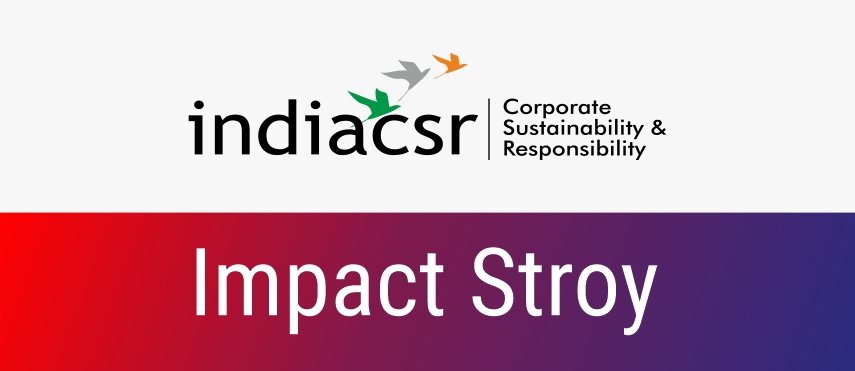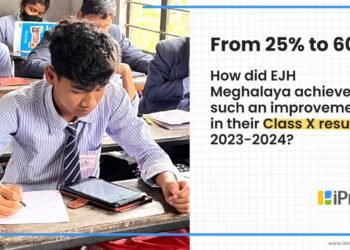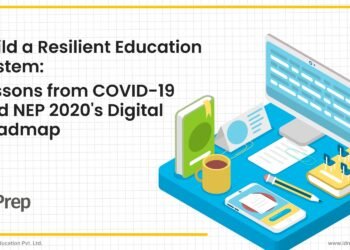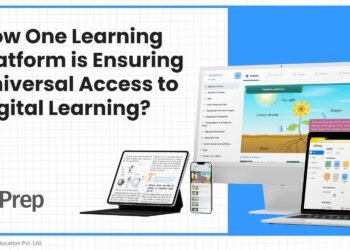In a world where technology is rewriting the rules of education, we’re here to unravel technology trends that are elevating digital education in India!
In the ever-evolving landscape of education, students are now finding new ways to discover the joy of learning. Today, the ability to access textbooks on a device and engage in bite-sized learning within the same application, followed by practice in various school curriculum topics and tests with feedback, has made effective self-paced/classroom learning easily possible.
Technology Enabled Flexibility
In this digital age, students prefer to take charge over their learning style and timetables, and education technology plays a pivotal role in enabling this autonomy. It grants them the power to shape their learning style and schedule in remarkable ways. With the ability to pause, rewind, reduce speed or fast-forward through lessons, students can learn at their own pace as per their individual needs. These are highly nuanced capabilities, and there is much more on the horizon currently undergoing refinement and development.
***
Surge in popularity of Education Technology
In recent years, technology has witnessed a surge in popularity and increased accessibility, largely attributed to fine-tuning in digital learning solutions. Personalised learning applications, offline content access, gamification, and the incorporation of multimedia in various categories is contributing to the widespread integration of technology within the education sector, resulting in a multitude of advantages.

Getting deeper
Personalised and Adaptive Learning
Based on a 2021 ASER survey, it was found that approximately 47% of students who were unable to continue learning during COVID-19 attributed to a shortage of learning devices, while 10% pointed to a lack of internet connectivity as the issue. Additionally, due to parents’ work schedules, the digital devices they owned were unable to effectively match the time of school.
***

Given this data and feedback from the field, the primary solution identified to address this challenge was to provide access to personalised devices. The Haryana Government became the first to adopt PAL (Personalized Adaptive Learning) as a means to cover the learning gap of 5 lakh government school students in the state.
Personalized and adaptive learning (PAL) by Edtech Companies such as iDream Education is designed to help students bridge their learning gaps and achieve proficiency at their grade level.
***
Two-way Conversations in E-Learning
Teaching is a one-to-many approach, making it challenging for teachers to provide individualized attention to students. Consequently, students often look for online resources such as videos and sample papers to address their queries, resulting in significant demand for comprehensive learning platforms.
These platforms enable two-way communication between students and experts in video lessons, which closely resemble traditional teaching approaches.
With individual attention, these learning platforms also helps students evaluate their understanding through practice exercises and assessments, allowing them to monitor their coursework progress, resulting in technology acceptance among students.
***
Video based learning
According to a case study conducted in India titled “Situation Analysis on the Impact of and Responses to COVID-19 on the Education Sector in Asia” by UNICEF, school students had greater access to recorded video lessons and online classes. Specifically, 29 % of private school students reported. In contrast, 18 % of government school students were utilizing video recordings.

“Students prefer learning through video lessons because it offers concise and easily digestible way to grasp the material, typically within a short 4-5 minute timeframe”, said Vishal Goswamy, Assistant Director – Marketing & Growth at iDream Education
Open Educational Resources
Open Educational Resources (OER) encompass openly accessible educational content designed for learning, teaching, and research purposes. Diksha and Swayam are learning platforms of the Government of India. The platforms comprise of wealth of educational materials, spanning a wide array of subjects such as mathematics, sciences, and languages, as well as specialized fields like business and fine arts.
Further, OER content is a valuable technology trend because it suits different teaching pedagogies and different learning styles of students through its multi-category content like audio, video, and other multimedia.
***
Tablets/Notebooks/Laptops for home learning, revision & assignments
The use of personalised devices for home learning fosters a non-judgmental learning environment, allowing students to explore their interests and abilities freely. One example of it is Shreya, who could not continue her learning during the COVID-induced lockdown because of the unavailability of personalised learning device at home.
However, when her school resumed, and she gained access to iPrep tablets loaded with multi-grade content, her learning experience changed. She diligently caught up on the concepts she had missed over the past two years without the fear of being judged, ultimately achieving grade-level proficiency. As a testament to her dedication, Shreya secured the top position in her class 10 exams in Pune District.
This reflects that the emergence of technological trends, such as the availability of notebooks, tablets, and laptops for home learning, has simplified and streamlined the processes of learning, revision, and practice.
***
Mobile App Based Learning
In today’s digital era, the younger generation is not only tech-savvy but also heavily reliant on mobile applications. They dedicate a significant portion of their time to these apps. In order to promote learning within the comfort of their homes, mobile app-based education is another evolving technological trend in the education sector. This approach allows students to engage in learning activities without succumbing to boredom.

A prime example of this is more than 7000 girls residing in remote districts of Uttar Pradesh (UP) and Madhya Pradesh (MP) using iPrep. Usage statistics on the app’s Reporting dashboard revealed that on average, these girls spend approximately 175 minutes per month actively engaged with the platform.
Over 80% of them use iPrep on a daily basis, granting them unrestricted access to educational content at any time and from any location. Providing students with access to mobile learning apps and platforms empowers them to pursue education aligned with their interests and abilities in a non-judgmental and enjoyable learning environment.
***
Mobile/Tablet/Notebook/Smart Class based learning

With the growing adoption of mobile-based learning by students, the government is actively working to enhance the status of Information and Communication Technology (ICT) in various States and Union Territories (UTs).
The respective Education departments have dedicated significant efforts to promote digital learning and the integration of technology into classrooms.
- As part of the Unnayan Bihar Initiative, 3,304 schools in the State of Bihar have been equipped with Smart TVs, with one installed in each classroom.
- In Maharashtra, there has been a substantial distribution of technology resources, including 5,410 laptops, 6,857 tablets, 33,633 desktop computers, 24,487 projectors, 34,339 LCD/LED/Plasma screens, 2,619 DTH-TV antennas, and 3,319 digital boards with Learning Management Systems (LMS) for schools, all under the ICT scheme.
- Similarly, Uttarakhand has made significant strides in advancing digital learning, providing laptops to 126 schools, tablets to 111 schools, digital boards to 36 schools, PC setups with Integrated Teaching Learning Devices to 126 schools, LED/LCD Plasma screens to 418 schools, and desktop computers to 1,967 schools to effectively implement ICT and foster digital learning.
***
Enabling Smart Classrooms in Schools Through Server Technology
Innovative educational technology solutions are opening up opportunities for governments, corporate social responsibility (CSR) initiatives, and non-governmental organizations (NGOs) to extend digital education in India. The refinement of technology in the field of education is being diligently pursued to ensure that students in the remotest regions of India have access to education anytime and anywhere.
“iDream Education is actively working to enhance iPrep, our comprehensive learning platform to reach even the most remote areas of India,” said Vishal Goswamy. Assistant Director- Marketing and Growth at iDream Education.
He further specified their Saharanpur Nagar Nigam Smart Class Project marks an amazing step forward in advancing digital education in the city. With 20 schools benefiting from a centralized hub at the Nagar Nigam office.
The setup is seamlessly synchronized with 20 Interactive Flat Panels (IFPs), and the server setup is hosted with an extensive repository of UP Board curriculum-aligned educational resources in Hindi and English, catering to students from grades 1 to 12.
Not only does this approach enhance accessibility and reduce costs, but it also enables uninterrupted learning, transcending the limitations of constant internet connectivity.
This evolved technological approach not only improves accessibility and reduces costs but also ensures uninterrupted learning, overcoming the challenges associated with constant internet connectivity.
***
To Conclude
The relentless innovation in technology by EdTech companies and the concerted efforts of the government are ushering in a new era of education in India. The journey towards a digitally empowered education system is well underway, with the aim of closing learning gaps, tailoring learning experiences, expanding accessibility, and empowering students from all corners of the nation.
As technology continues to advance and seamlessly integrate into the fabric of education, the future holds boundless possibilities. In this promising landscape, learning transcends physical boundaries, and knowledge becomes a beacon of hope, guiding countless individuals towards a brighter, more inclusive future.
If in case you would like to know about the best-suited technology to scale your digital education initiative, visit website, www.idreameducation.org, or write to at share@idreameducation.org
Copyright@IndiaCSR
Also Read
- Personalised Learning Journey of Shreya Namdev, a Class 10th Student
- Promoting Language Diversity: Harnessing the Richness of Teaching and Learning in Hindi
- Enhancing Teaching through Smart Class Integration in a Govt School in Palamu, Jharkhand – A Case Study
- 5000+ students in Meghalaya empowered with iPrep Digital Learning. Meghalaya’s Education Minister credits the District Administration in East Jaintia Hill
- How Digital Education Can Solve the 5 Biggest Educational Challenges that India is Facing?
***



















